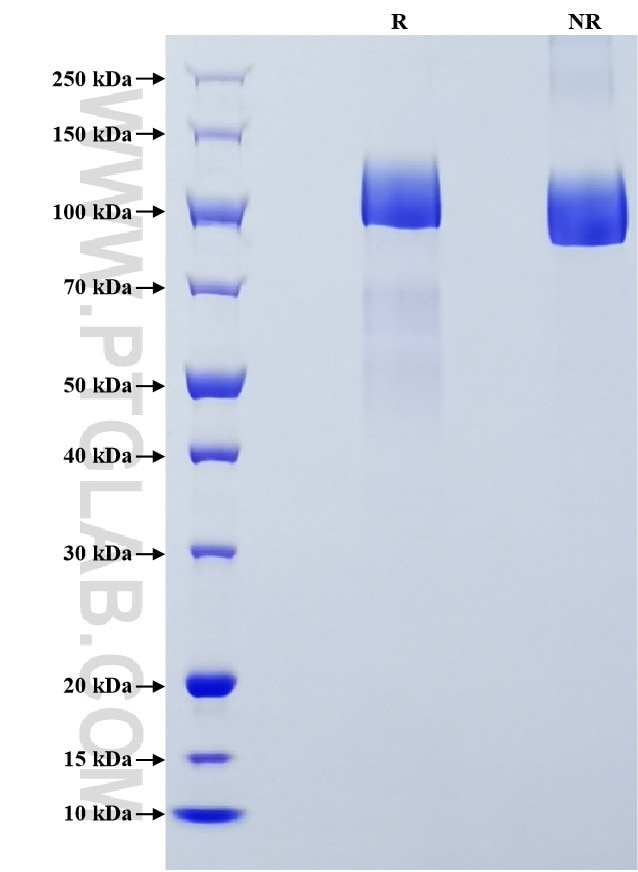Recombinant Human FLT4 protein (His Tag)
Species
Human
Purity
>90 %, SDS-PAGE
Tag
His Tag
Activity
not tested
Cat no : Eg2494
Validation Data Gallery
Product Information
| Purity | >90 %, SDS-PAGE |
| Endotoxin | <0.1 EU/μg protein, LAL method |
| Activity |
Not tested |
| Expression | HEK293-derived Human FLT4 protein Tyr25-Ile776 (Accession# P35916-1) with a His tag at the C-terminus. |
| GeneID | 2324 |
| Accession | P35916-1 |
| PredictedSize | 85.6 kDa |
| SDS-PAGE | 90-130 kDa, reducing (R) conditions |
| Formulation | Lyophilized from sterile PBS, pH 7.4. Normally 5% trehalose and 5% mannitol are added as protectants before lyophilization. |
| Reconstitution | Briefly centrifuge the tube before opening. Reconstitute at 0.1-0.5 mg/mL in sterile water. |
| Storage Conditions |
It is recommended that the protein be aliquoted for optimal storage. Avoid repeated freeze-thaw cycles.
|
| Shipping | The product is shipped at ambient temperature. Upon receipt, store it immediately at the recommended temperature. |
Background
FLT4 (Fms-related tyrosine kinase 4; also known as VEGFR3) is the main receptor for VEGFC (vascular endothelial growth factor C), and its activation mediates LEC (lymphatic endothelial cell) proliferation, migration, and survival. FLT4 and the ligand VEGFC increase their expression in macrophages upon bacterial infection. Studies have demonstrated the critical roles of the FLT4-mediated pathway in the regulation of lymphatic and blood-vascular development. FLT4 and its ligand VEGFC are expressed in leukemic blasts in AML and the role of this signaling axis is closely related to blast survival. In addition, VEGFC and FLT4 are expressed in the BM (bone marrow) of AML (Acute myeloid leukemia) and VEGFC can protect AML blasts against chemotherapy by inducing their proliferation, showing the importance of VEGFC signaling in blast maintenance.
References:
1. Jerafi-Vider, Ayelet et al. Cell reports vol. 35,11 (2021): 109255. 2. Zhang, Yanbo et al. Immunity vol. 40,4 (2014): 501-14. 3. Zhang, Luqing et al. Cell research vol. 20,12 (2010): 1319-31. 4. Lee, Ji Yoon et al. Haematologica vol. 108,11 (2023): 2933-2945.
